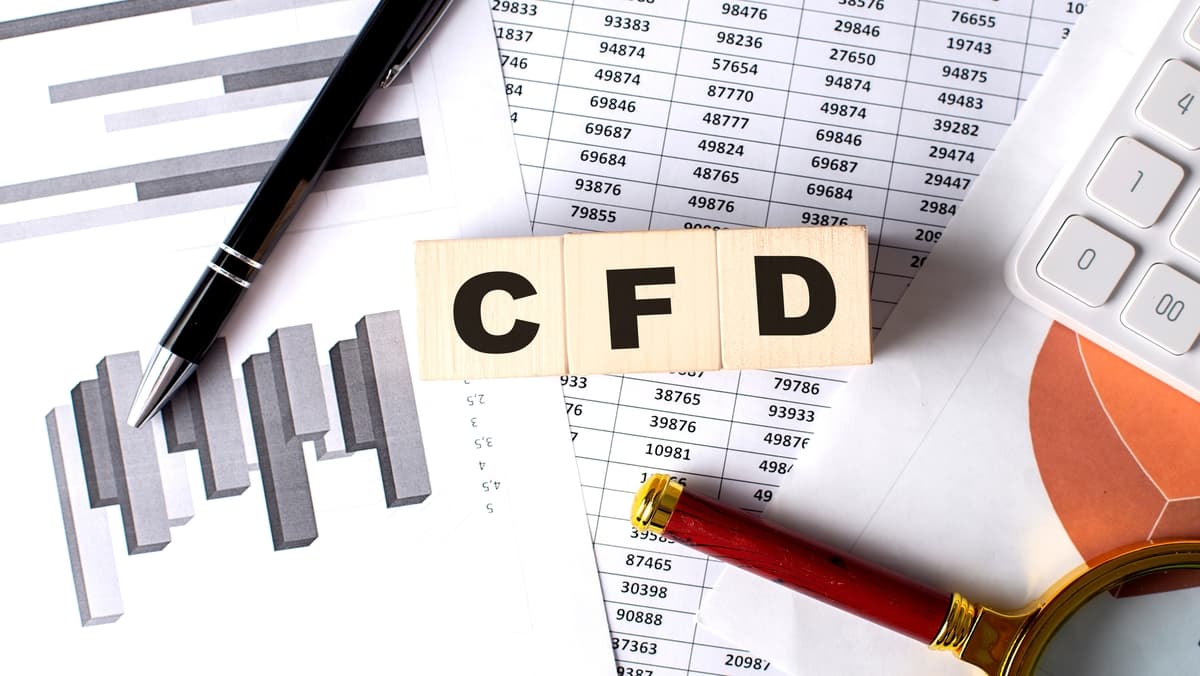Friday Aug 2 2024 01:47

7 min

A better understanding of trading terms enables traders to make informed decisions, manage risks, and develop strategies. Understanding "stop-loss" and "take-profit" helps in setting exit points to protect gains and limit losses, while "leverage" and "margin" impact how much capital is needed and the potential for amplified returns or losses. Recognizing "volatility" aids in assessing market conditions and adjusting strategies. Mastery of these terms enhances communication with brokers, boosts confidence, and improves overall trading efficiency, leading to better decision-making and risk management.
CFDs (Contracts for Difference) are a type of financial derivative that allow you to speculate on the price movements of an underlying asset without actually owning it. When you trade CFDs, you enter into an agreement to exchange the difference in the asset's price between when you open and close your position. Your profit or loss is determined by this price difference.
How to trade CFDs?
To trade CFDs, first choose a regulated broker and open an account. Deposit funds, keeping leverage risks in mind. Develop a trading strategy and use technical and fundamental analysis to guide your decisions. Decide whether to go long (buy) or short (sell) based on your market outlook. Place your trades using your broker’s platform and set stop-loss and take-profit orders to manage risk. Monitor your trades and adjust as necessary based on market movements. Finally, close your trades when your target is met or if you need to cut losses. Review your trades regularly to refine your strategy.
Going Long: Buy a CFD when you expect the asset’s price to rise. Set a target price for taking profits and a stop-loss to limit potential losses. Monitor the asset and adjust your orders as needed. Close the trade when the asset hits your profit target or stop-loss level.
Going Short: Sell a CFD when you expect the asset’s price to fall. Set a target price for buying back (covering) the CFD and a stop-loss to prevent large losses if the price rises. Monitor the asset, adjusting orders as necessary. Close the trade when the price reaches your target or stop-loss.
Going long (or 'buying') means you expect a market’s price to increase; while going short (or 'selling') means you anticipate the price will decrease. However, short selling carries significant risk because potential losses can be unlimited if not managed carefully, as there’s no upper limit to how high a market’s price can rise.
Margin refers to the amount of money required to open and maintain a trading position, acting as a security deposit or collateral. It is a percentage of the total trade value and allows traders to leverage their capital, controlling larger positions with a smaller investment. Margin can magnify both potential gains and losses. If the market moves unfavorably, traders may be required to deposit additional funds to maintain their positions, known as a margin call. Effective margin management is crucial to avoid excessive risk and ensure that trades remain within acceptable risk limits.
Leverage in trading enables you to open a position worth much more than the money you deposit. For example, you might be able to multiply your position size by 5, 10, 20 or even 33x the amount of your initial outlay. Trading stocks with leverage involves opening a position through a broker and borrowing a significant portion of the position's value from them, based on the leverage ratio.
For example, with 5x leverage, you use one-fifth of your own funds and borrow the rest; with 20x leverage, you use just 5% of your own funds. The broker does not charge extra based on the amount of leverage used.
Margin trading carries significant risk because it can lead to losses far exceeding your initial deposit, potentially surpassing your margin amount. This risk involves the potential for substantial financial loss. It’s crucial to fully understand the risks associated with margin trading. Thankfully, we provide tools and mechanisms to help you manage and mitigate these risks effectively.
How to manage your trading risk?
To manage trading risk, set stop-loss orders to automatically close trades at a predefined loss level, limiting potential damage. Use take-profit orders to secure potential gains when prices reach target levels. Control position sizes by risking only a small percentage of your capital per trade to avoid significant losses.
Apply leverage cautiously to prevent magnified losses. Diversify investments across different assets to reduce exposure to any single asset's risk. Regularly review and analyze your trades, adjusting strategies based on performance and market conditions to refine your approach and improve risk management. Consistent evaluation helps in adapting to changing market dynamics effectively.
Volatility refers to times when markets are moving rapidly, typically as a result of announcements, events or market sentiment. While it inherently comes with higher risks, you can also find opportunities if you have a solid trading plan that includes comprehensive risk management measures.
Trading volatility is crucial because it directly impacts profit potential and risk management. High volatility offers opportunities for significant potential gains due to larger price swings, but it also requires careful risk management. Understanding volatility helps traders set effective stop-loss and take-profit levels, adjust position sizes, and choose appropriate trading strategies. It also aids in market analysis using volatility indicators like ATR and Bollinger Bands, which can guide strategic adjustments. By being aware of volatility, traders can remain disciplined, avoid emotional decisions, and adapt their strategies to market conditions, ensuring better decision-making and risk control.
When considering shares, indices, forex (foreign exchange) and commodities for trading and price predictions, remember that trading CFDs involves a significant degree of risk and could result in capital loss.
Past performance is not indicative of any future results. This information is provided for informative purposes only and should not be construed to be investment advice.